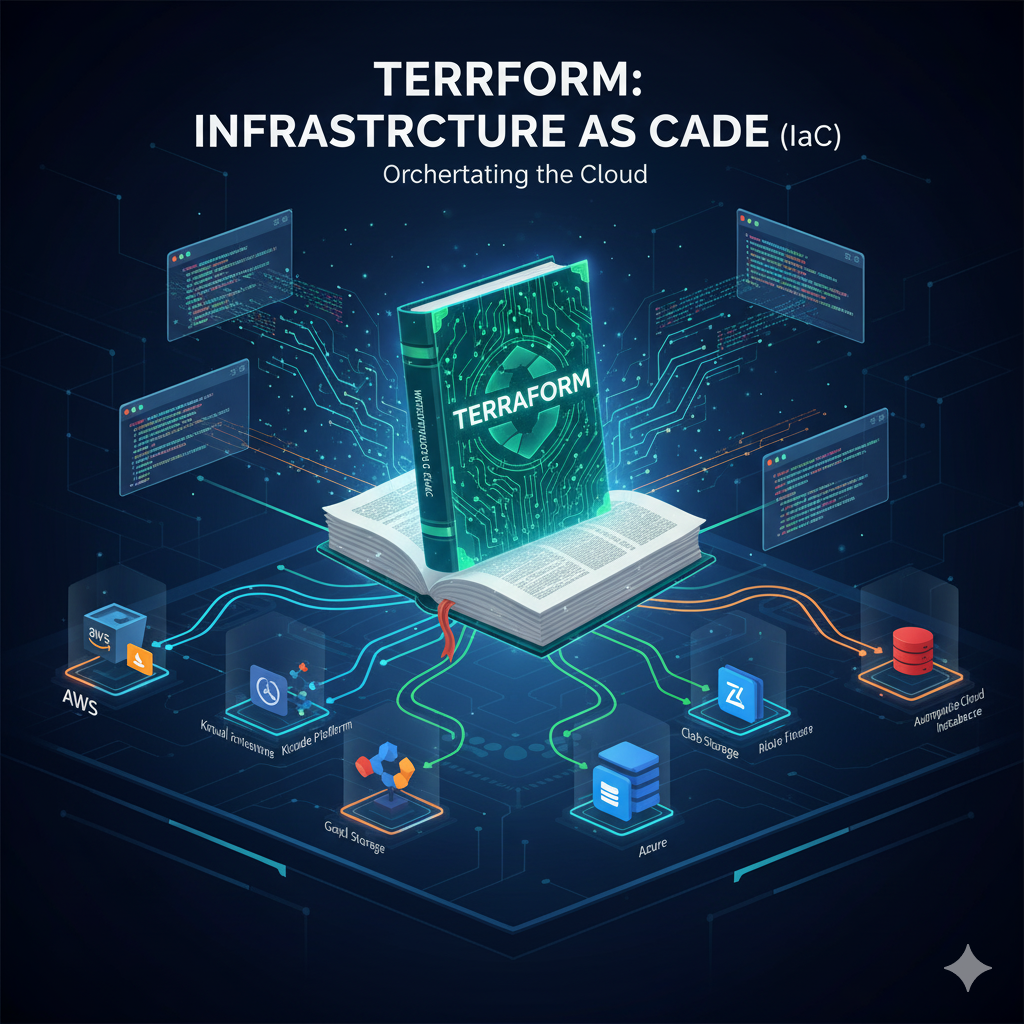Infrastructure as Code (IaC) with Terraform
Cloud infrastructure today is far too complex to manage by hand. Infrastructure as Code (IaC) brings software engineering practices to infrastructure: automation, version control, repeatability, and modular design. Among all IaC tools, Terraform has become the industry standard thanks to its cloud-agnostic design and strong ecosystem.
This guide covers Terraform fundamentals, a practical AWS example, and the interview-ready patterns you’ll need to explain in FAANG interviews or apply in real-world engineering.

1. Why IaC with Terraform?
- Definition: Manage infrastructure using code instead of manual clicks.
- Benefits: Consistency, repeatability, automation, modularity.
- Alternatives: AWS CloudFormation, Azure ARM templates, Pulumi.
- Why Terraform: Cloud-agnostic, strong ecosystem of providers, open-source, declarative.
2. Core Terraform Concepts
- HCL (HashiCorp Configuration Language): Declarative syntax for resources.
- Providers: Plugins for AWS, GCP, Azure, OCI, Kubernetes, etc.
- State: Tracks the real-world infrastructure (
terraform.tfstate). - Modules: Reusable building blocks for cleaner, DRY infrastructure.
- Workflow:
terraform init— initialize.terraform plan— preview changes.terraform apply— create/update resources.terraform destroy— clean up.
3. Practical Example: AWS VPC + EC2 + S3
A minimal Terraform example to create a VPC, subnet, EC2 instance, and S3 bucket.
provider "aws" {
region = "us-east-1"
}
# Variables for customization
variable "bucket_name" {
type = string
default = "my-terraform-bucket-example"
}
# VPC
resource "aws_vpc" "main" {
cidr_block = "10.0.0.0/16"
tags = { Name = "main-vpc" }
}
# Subnet
resource "aws_subnet" "public" {
vpc_id = aws_vpc.main.id
cidr_block = "10.0.1.0/24"
tags = { Name = "public-subnet" }
}
# EC2 Instance
resource "aws_instance" "web" {
ami = "ami-0c55b159cbfafe1f0" # Amazon Linux 2
instance_type = "t2.micro"
subnet_id = aws_subnet.public.id
tags = { Name = "web-server" }
}
# S3 Bucket
resource "aws_s3_bucket" "data" {
bucket = var.bucket_name
acl = "private"
tags = { Name = "data-bucket" }
}
# Outputs
output "instance_ip" {
value = aws_instance.web.public_ip
}
output "bucket_name" {
value = aws_s3_bucket.data.bucket
}Best practices:
- Store credentials in
~/.aws/credentialsor use IAM roles, never inline. - Split into modules for larger projects (e.g.,
vpc,compute,storage). - Use remote state (e.g., S3 + DynamoDB lock) for teams.
- Add lifecycle rules and tags for cost visibility.
4. Terraform in Distributed Systems
Terraform is used to provision:
- Compute: EC2, GKE nodes, OCI compute.
- Networking: VPCs, load balancers, firewalls.
- Storage: S3, GCS, OCI Object Storage.
- Databases: RDS, Cloud SQL, DynamoDB.
In distributed systems design:
- Use modules for repeatable patterns (e.g., web service stack).
- Environment isolation: dev / stage / prod.
- CI/CD integration: Run
terraform planandterraform applyin pipelines.
5. Common Terraform Patterns
- Modular architecture: Reusable modules for VPC, DB, app clusters.
- Remote state: Store in S3/GCS/Azure Blob with locking.
- Workspaces: Manage environments (dev, staging, prod).
- GitOps workflow: PR → review → pipeline → terraform apply.
- Secrets: Use cloud-native secrets managers, not inline variables.
6. Interview & Real-World Tips
- Know the basics: service mapping (EC2 ⇄ Compute Engine ⇄ OCI Compute).
- Explain scaling: stateless services, autoscaling, LB.
- Discuss security: IAM roles, least privilege, encryption.
- Trade-offs: Manual vs automated, cost vs availability.
- Concrete examples: S3 bucket with lifecycle rules, or Terraform module reuse.
- STAR format: Be ready with one story of IaC automation → cost savings / faster deployment.
Example response:
“I automated VPC + EC2 + S3 provisioning with Terraform, reducing deployment time from 2 days to 30 minutes and cutting costs 15% by adding S3 lifecycle rules.”
7. Final Notes
Terraform + IaC is a must-know skill for interviews and real-world cloud engineering. Master:
- Service mapping (compute, storage, networking).
- Terraform workflow (init, plan, apply).
- Patterns: modular design, state management, remote backends.